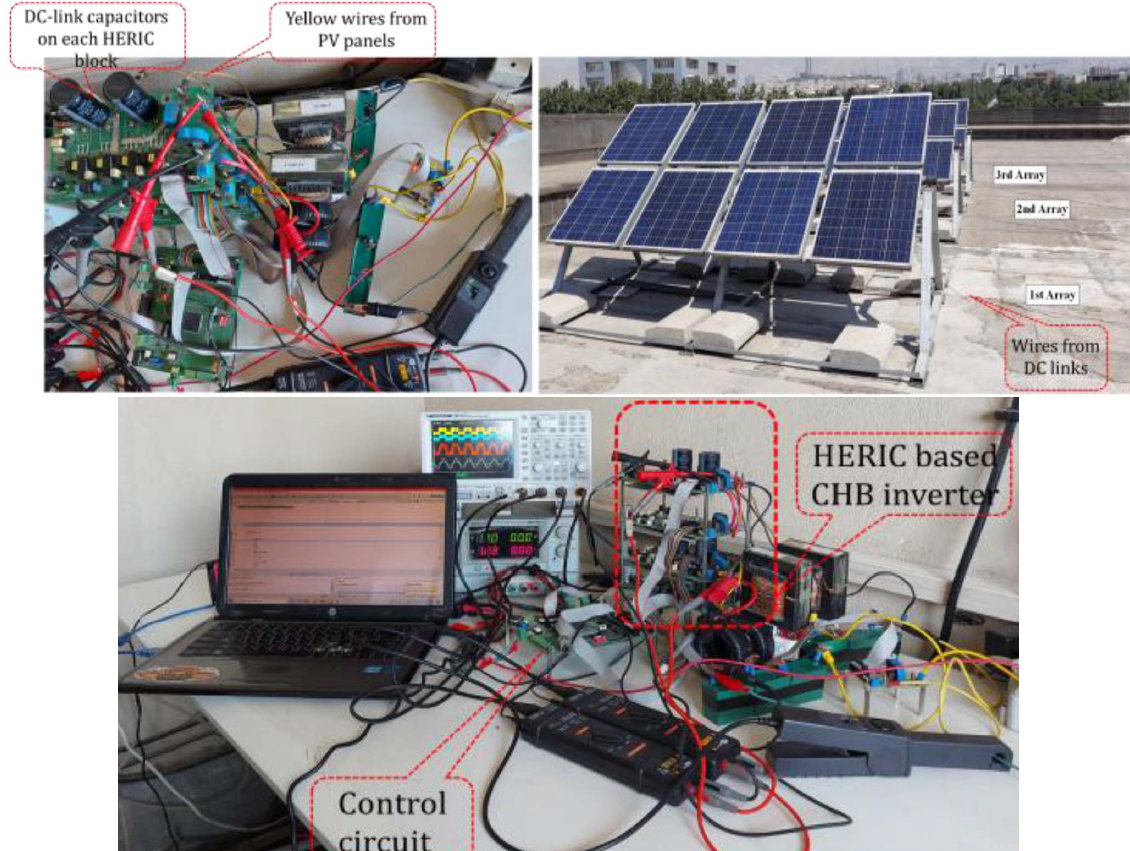
02161115044

Grid-tied photovoltaic (PV) inverters usually have galvanic isolation. PV systems with transformer have several stages of power conversion which reduce the efficiency, increase the cost of the system. Therefore, removing the transformer can be a suitable option for PV systems.
However, the leakage current can flow through the system because of no galvanic isolation. This undesirable current leads to more losses, electromagnetic interferences, current harmonic distortion, and safety concerns.
Nowadays, the utilization of cascaded H-bridge (CHB) converters in PV applications is more attractive. The distinct DC links in CHB inverters provide the independent control on arrays voltages, and therefore, the individual maximum power point tracking (MPPT) algorithms can be applied in each PV string. Also, the modularity feature of CHB topology makes it possible to reach higher voltage levels readily. Hence, the CHB inverter can process the electric power in one stage and without any extra transformer and boost stage, which results in a higher conversion efficiency. Therefore, the leakage current suppression challenge in the transformerless CHB inverter is investigated in this thesis. So, first, the theoretical analysis is presented to model the leakage current; then two new solutions are proposed for suppressing the leakage current which are validated with simulation and experimental results.
The first solution is a modulation-based method. In the proposed method, the leakage current is significantly reduced and there is no need to extra hardware components.In this method a modified PSPWM based strategy is employed to reduce the leakage current. In contrast to most existing solutions, the proposed method can be easily generalized through the series connection of 5-level CHB blocks. The second solution presents a hardware-based method and uses high efficient and reliable inverter concept (HERIC) in CHB converters. Using this idea and proper utilization of AC side filters leads to leakage current suppression in individual cells, and thus, the whole system. In contrast to most existing solutions, the proposed technique can be easily extended to CHB inverters with an arbitrary number of voltage levels. Moreover, this solution is applicable in the system’s conditions with unequal parasitic capacitances and unequal DC link voltages of H-bridge cells.

Power Electronics and Energy Systems Laboratory was established in 2010 with the aim of training efficient engineers and researchers. In this educational and research environment, specialized fields such as the design of power electronic systems, including all types of power supplies, inverters and rectifiers, high and multi-level power converters, types of high voltage or HV systems, energy conversion systems, etc. are under study and research.

Design: Mahyan
Leave a Reply